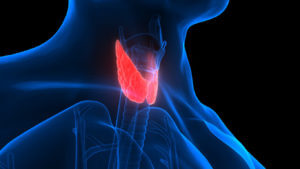
Radiation exposure from atmospheric nuclear tests in the 1950s and 1960s has had lasting health effects on many individuals, especially in areas located near test sites. Thyroid cancer is one of the most significant risks associated with this type of radiation exposure.
Let us explore the connection between thyroid cancer and past atmospheric nuclear tests, helping downwinders navigate their concerns with confidence and knowledge.
What Are Atmospheric Nuclear Tests
Atmospheric nuclear tests were conducted by detonating nuclear weapons in the open air, often at high altitudes. These tests created enormous radioactive fallout that drifted across the atmosphere, exposing nearby populations to harmful radiation.
Fallout particles included iodine-131, a radioactive isotope known to increase the risk of developing thyroid cancer and other illnesses.
Between 1945 and 1962, the United States completed over 100 atmospheric nuclear tests, many of them at the Nevada Test Site. Radiation from these tests spread far beyond the immediate area, with wind patterns carrying contamination to neighboring states like Utah, Arizona, and even Montana.
How Does Radiation Exposure Lead to Thyroid Cancer
Radiation directly affects the thyroid gland, a small, butterfly-shaped organ located in your neck that produces hormones to regulate important bodily functions. Here is how thyroid cancer from radiation exposure occurs.
- Absorption of Iodine-131: The body cannot differentiate between stable iodine and radioactive iodine-131. When radioactive iodine enters the body (often through contaminated food, milk, or air), it concentrates in the thyroid.
- Cell Damage: Radiation from iodine-131 damages the DNA in thyroid cells, increasing the risk of mutations that cause cancer.
- Risk Among Children: Research shows children whose thyroids are still developing are at the highest risk of radiation-related thyroid cancer.
Even decades after exposure, individuals remain at risk for thyroid cancer.
Who Are the Downwinders
Downwinders is a term used to describe individuals who lived in areas affected by radioactive fallout from atmospheric nuclear tests. Communities in southern Utah, Nevada, Arizona, and beyond were among the most exposed.
Many downwinders developed illnesses such as thyroid cancer, leukemia, and other types of cancers years after the tests. Federal programs like the Radiation Exposure Compensation Act (RECA) have worked to provide support and compensation to those impacted.
Symptoms of Thyroid Cancer
Thyroid cancer may not present symptoms in its earliest stages, but here are signs to look out for:
- A lump or swelling in the neck
- Hoarseness or voice changes
- Difficulty swallowing
- Persistent pain in the neck or throat
- Swollen lymph nodes
If you or someone you know lived in regions affected by atmospheric nuclear tests and experiences these symptoms, it is crucial to see a healthcare professional immediately.
What Can Downwinders Do
The following outlines what you should do if you are a Downwinder and are concerned about thyroid cancer.
Regular Health Screenings
Routine screenings can help detect thyroid cancer early. Your doctor may recommend blood tests, ultrasounds, or thyroid biopsies based on your exposure history.
Become Educated on Risk Factors
Understanding your history and living conditions during the fallout period is key. Communities impacted by atmospheric nuclear tests should prioritize learning about their risks and take preventive action.
Preventing Future Risks
While atmospheric nuclear testing has ceased, there are still potential risks for downwinders. If you lived near contaminated sites during this time period, it is essential to receive regular health check-ups to detect any abnormalities in your thyroid function.
Consuming iodine-rich diets can also help protect against radioactive iodine exposure in emergencies.
Seek Compensation and Support
If you lived in states like Utah, Nevada, or Arizona during the nuclear testing period and developed thyroid cancer or another cancer linked to radiation exposure, you may be eligible for compensation. Programs such as RECA provide benefits to those affected.
How to Navigate the RECA Program
The Radiation Exposure Compensation Act was passed in 1990 to assist individuals from downwind communities who were impacted by atmospheric nuclear tests. If you qualify, you could receive financial compensation for medical bills and other associated costs.
To qualify, you must meet specific criteria, including:
- Proof of residing in a specified area during the testing period
- A diagnosis of certain covered cancers, including thyroid cancer
Claiming your benefits can be complex, and working with an experienced organization like Downwinders® can ensure your case is filed correctly and efficiently.
From eligibility checks to documentation assistance, Downwinders® provides on-the-ground help to affected individuals. Their process has a success rate exceeding 95%.
Get Compensation for Thyroid Cancer from Atmospheric Nuclear Tests in Arizona, Nevada, and Utah
The impacts of atmospheric nuclear tests should never be forgotten. Thyroid cancer and related illnesses have disrupted too many lives in downwind communities. However, by staying informed, advocating for fair compensation, and supporting one another, we can move forward.
If you or your loved ones were affected, act today to access the compensation and resources you deserve. At Downwinders®, we have a team of highly experienced providers who can determine your eligibility and file compensation for thyroid cancer on your behalf.
To learn more about us or get started with us, use our registration form. We look forward to serving you!
